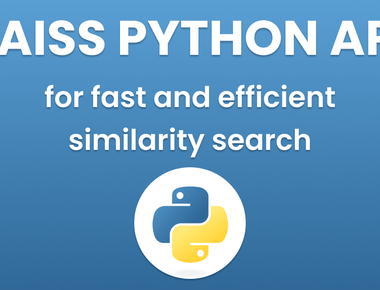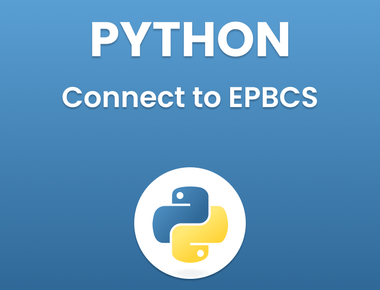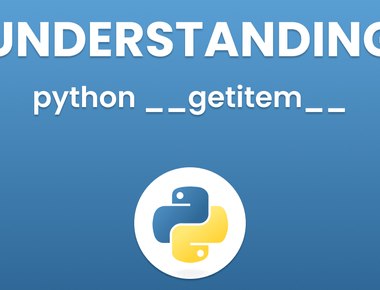
Are you preparing for a Python interview? Then you’ll need to prepare to answer some technical questions about the programming language. Common Python interview questions include topics such as data structures and algorithms, object-oriented programming, coding style, debugging techniques, and software engineering best practices. Be sure to brush up on your knowledge before going into any interview!
Python Interview Questions & Answers for 2023
- What is Python?
- Python is a high-level, interpreted programming language used for web development, data analysis, artificial intelligence, and scientific computing.
- What are the key features of Python?
- Some key features of Python include its easy-to-read syntax, dynamic semantics, and support for multiple programming paradigms.
- What are the benefits of using Python?
- Python offers many benefits including its ability to handle big data and its extensive standard library, which makes it easy to perform common tasks such as connecting to web servers and reading and writing files.
- What is the difference between Python and other programming languages?
- Python has a unique style of indentation to define its code blocks, it is dynamically-typed, and it supports multiple programming paradigms such as object-oriented, functional, and procedural.
- What are the different types of data types in Python?
- Python has several built-in data types including numbers, strings, lists, tuples, dictionaries, and booleans.
- What is the difference between a list and a tuple in Python?
- A list is a mutable data type, meaning its elements can be changed, while a tuple is immutable and its elements cannot be changed.
- What is a dictionary in Python?
- A dictionary in Python is an unordered collection of key-value pairs, where each key is unique.
- What is a function in Python?
- A function in Python is a block of code that can be called and reused multiple times, and can take in parameters and return a value.
- What is an exception in Python?
- An exception in Python is an event that occurs during the execution of a program that disrupts the normal flow of instructions and requires special handling.
- What is a decorator in Python?
- A decorator in Python is a design pattern used to add new functionality to an existing object without modifying its structure. It is a way to wrap a function with another function to modify or add behavior to the original function.
- What is the difference between xrange and range in Python?
- xrange is a Python 2 function that generates a list of numbers on the fly, while range generates a list of numbers in memory. This makes xrange more memory-efficient when working with large numbers.
- What is the use of ‘init’ method in Python?
- The ’init’ method in Python is a constructor method that is called when an object is created from a class. It is used to set up or initialize the attributes of an object.
- What is a module in Python?
- A module in Python is a collection of functions, classes, and variables that can be reused across different programs.
- What is the difference between ‘is’ and ’==’ in Python?
- ‘is’ is used to check if two variables refer to the same object, while ’==’ is used to check if the values of two variables are equal.
- What is the difference between a class and an object in Python?
- A class is a blueprint or template for creating objects, while an object is an instance of a class that has its own attributes and methods.
- What is the difference between deep and shallow copy in Python?
- A shallow copy creates a new reference to the same objects as the original, while a deep copy creates a new copy of the objects, so that changes to the original do not affect the copy.
- What is the use of ‘with’ statement in Python?
- The ‘with’ statement in Python is used to wrap the execution of a block of code with methods defined by a context manager. It is used to simplify the try-finally block and to ensure that resources are properly acquired and released.
- What is the difference between a generator and an iterator in Python?
- An iterator is an object that can be iterated (looped) upon, while a generator is a special type of iterator that is defined using a function.
- What is the use of ‘yield’ keyword in Python?
- The ‘yield’ keyword in Python is used in the body of a function like a return statement, but when the function is called, it returns a generator object. When the generator’s next() method is called, the function is resumed and continues execution until a yield statement is encountered.
- What is the use of ‘lambda’ function in Python?
- The ‘lambda’ function in Python is used to create small, anonymous functions. These functions can have any number of arguments but only one expression. They are often used in situations where a function is required for a short period of time.
- What is the use of ‘pass’ statement in Python?
- The ‘pass’ statement in Python is used as a placeholder in the code. It is used when a statement is required syntactically, but no action is needed to be performed.
- What is the use of ‘assert’ statement in Python?
- The ‘assert’ statement in Python is used to test if a given condition is true, and if it is not true, an AssertionError is raised with an optional error message. It is used for debugging and testing purposes.
- What is the use of ‘del’ statement in Python?
- The ‘del’ statement in Python is used to delete objects, such as variables, lists, or elements of a list. It can also be used to delete entire slices of a list.
- What is the use of ‘global’ statement in Python?
- The ‘global’ statement in Python is used to indicate that a variable is a global variable, and that it should be accessible from anywhere in the code.
- What is the use of ‘nonlocal’ statement in Python?
- The ‘nonlocal’ statement in Python is used to indicate that a variable is non-local, and that it should be accessible from the enclosing scope, but not from the global scope.
- What is the use of ‘try’ and ‘except’ statement in Python?
- The ‘try’ and ‘except’ statement in Python is used to handle exceptions that may occur in the code. The ‘try’ block contains the code that may raise an exception, while the ‘except’ block contains the code that will be executed if an exception is raised.
- What is the use of ‘raise’ statement in Python?
- The ‘raise’ statement in Python is used to raise an exception explicitly. It is used to signal that an error or exceptional condition has occurred in the program.
- What is the use of ‘finally’ statement in Python?
- The ‘finally’ statement in Python is used to specify a block of code that will be executed no matter whether an exception has been raised or not. It is often used to release resources, such as file handles or network connections.
- What is the use of ‘with’ statement in Python?
- The ‘with’ statement in Python is used to wrap the execution of a block of code with methods defined by a context manager. It is used to simplify the try-finally block and to ensure that resources are properly acquired and released.
- What is the use of ‘import’ statement in Python?
- The ‘import’ statement in Python is used to import a module or a specific function, class or variable from a module. It allows the use of code from another file in the current script.
- What is the use of ‘from’ statement in Python?
- The ‘from’ statement in Python is used in conjunction with the ‘import’ statement to import specific functions, classes or variables from a module. It allows the use of code from another file in the current script, without having to use the module name to access the imported elements.
- What is the use of ‘as’ statement in Python?
- The ‘as’ statement in Python is used in conjunction with the ‘import’ and ‘from’ statements to give a module, function, class or variable a different alias, or nickname, when imported. This allows the imported elements to be accessed using the new alias instead of the original name.
- What is the use of ’*’ in Python?
- The ’*’ symbol in Python is used to indicate that all elements of a list, tuple or other iterable should be unpacked and passed as individual arguments. It can also be used in the ‘from’ statement to import all elements of a module, without having to list them individually.
- What is the use of ’’ in Python?**
- The ’**’ symbol in Python is used to indicate that all elements of a dictionary should be unpacked and passed as keyword arguments. It allows a function to accept a variable number of keyword arguments.
- What is the use of ’_’ in Python?
- The ’_’ symbol in Python is often used as a variable name for an unused variable, such as an index variable in a for loop. It is also used to indicate a private variable or method in a class.
- What is the use of ’__’ in Python?
- The ’’ symbol in Python is used to indicate a special variable or method in a class that follows the naming convention of ’var’ or ‘__method’. These are known as “dunder” (double underscore) methods and are often used for special methods such as init and str.
- What is the use of ‘name’ in Python?
- The �’name’ variable in Python is a built-in variable that holds the name of the current module. It is used to check if a script is being run directly or imported as a module.
- What is the use of ‘len()’ function in Python?
- The ‘len()’ function in Python is used to return the number of elements in an object, such as a list, tuple or string.
- What is the use of ‘type()’ function in Python?
- The ‘type()’ function in Python is used to return the type of an object. It can be used to check the type of a variable or to check if an object is an instance of a particular class.
- What is the use of ‘dir()’ function in Python?
- The ‘dir()’ function in Python is used to return a list of the attributes and methods of an object. It can be used to inspect the properties of an object and to discover new methods or attributes to use.
- What is the use of ‘print()’ function in Python?
- The ‘print()’ function in Python is used to display the output of a program to the console. It can take in multiple arguments and can also be used to print formatted strings by using placeholders.
- What is the use of ‘input()’ function in Python?
- The ‘input()’ function in Python is used to read input from the user. It prompts the user to enter a value, which is then returned as a string.
- What is the use of ‘int()’ function in Python?
- The ‘int()’ function in Python is used to convert a value to an integer. It can be used to convert a string or a floating-point number to an integer.
- What is the use of ‘float()’ function in Python?
- The ‘float()’ function in Python is used to convert a value to a floating-point number. It can be used to convert an integer or a string to a floating-point number.
- What is the use of ‘str()’ function in Python?
- The ‘str()’ function in Python is used to convert a value to a string. It can be used to convert an integer, a floating-point number or a boolean to a string.
- What is the use of ‘bool()’ function in Python?
- The ‘bool()’ function in Python is used to convert a value to a Boolean. It can be used to convert a value to True or False, depending on the value’s truthiness.
- What is the use of ‘list()’ function in Python?
- The ‘list()’ function in Python is used to convert an iterable object, such as a string or a tuple, to a list.
- What is the use of ‘tuple()’ function in Python?
- The ‘tuple()’ function in Python is used to convert an iterable object, such as a list or a string, to a tuple.
- What is the use of ‘set()’ function in Python?
- The ‘set()’ function in Python is used to convert an iterable object, such as a list or a string, to a set. A set is a collection of unique elements.
- What is the use of ‘dict()’ function in Python?
- The ‘dict()’ function in Python is used to create a new dictionary. It can take in a list of key-value pairs or another dictionary as an argument and creates a new dictionary with those elements.
- What is the use of ‘max()’ function in Python?
- The ‘max()’ function in Python is used to find the maximum value in an iterable, such as a list or a tuple.
- What is the use of ‘min()’ function in Python?
- The ‘min()’ function in Python is used to find the minimum value in an iterable, such as a list or a tuple.
- What is the use of ‘sum()’ function in Python?
- The ‘sum()’ function in Python is used to add up all the elements of an iterable, such as a list or a tuple.
- What is the use of ‘sorted()’ function in Python?
- The ‘sorted()’ function in Python is used to sort the elements of an iterable, such as a list or a tuple, in ascending or descending order.
- What is the use of ‘enumerate()’ function in Python?
- The ‘enumerate()’ function in Python is used to iterate over a sequence, such as a list or a tuple, and return both the index and the value of each element.
- What is the use of �‘zip()’ function in Python?
- The ‘zip()’ function in Python is used to combine multiple iterables, such as lists or tuples, into a single iterable of tuples.
- What is the use of ‘map()’ function in Python?
- The ‘map()’ function in Python is used to apply a given function to each element of an iterable, such as a list or a tuple, and return an iterator of the results.
- What is the use of ‘filter()’ function in Python?
- The ‘filter()’ function in Python is used to filter the elements of an iterable, such as a list or a tuple, based on a given function and return an iterator of the elements that pass the test.
- What is the use of ‘reduce()’ function in Python?
- The ‘reduce()’ function in Python is used to apply a given function cumulatively to the elements of an iterable, such as a list or a tuple, and return a single value.
- What is the use of ‘any()’ function in Python?
- The ‘any()’ function in Python is used to check if any element in an iterable, such as a list or a tuple, is true. It returns True if at least one element is true and False otherwise.
- What is the use of ‘all()’ function in Python?
- The ‘all()’ function in Python is used to check if all elements in an iterable, such as a list or a tuple, are true. It returns True if all elements are true and False otherwise.
- What is the use of ‘chr()’ function in Python?
- The ‘chr()’ function in Python is used to convert an ASCII value to its corresponding character.
- What is the use of ‘ord()’ function in Python?
- The ‘ord()’ function in Python is used to convert a character to its corresponding ASCII value.
- What is the use of ‘round()’ function in Python?
- The ‘round()’ function in Python is used to round a number to a specified number of decimal places.
- What is the use of ‘abs()’ function in Python?
- The ‘abs()’ function in Python is used to find the absolute value of a number.
- What is the use of ‘divmod()’ function in Python?
- The ‘divmod()’ function in Python is used to take two numbers and return a tuple of their quotient and remainder.
- What is the use of ‘pow()’ function in Python?
- The ‘pow()’ function in Python is used to raise a number to a given power. It can also be used to find the modulo of a number using the pow(x,y,z) form.
- What is the use of ‘range()’ function in Python?
- The ‘range()’ function in Python is used to generate a sequence of numbers. It can be used in for loops to iterate through a specified range of numbers.
- What is the use of �‘format()’ function in Python?
- The ‘format()’ function in Python is used to format strings by replacing placeholders with specified values. It can be used to insert variables into strings, align and justify text, and add leading zeroes.
- What is the use of ‘int()’ function in Python?
- The ‘int()’ function in Python is used to convert a value to an integer. It can be used to convert a string or a floating-point number to an integer.
- What is the use of ‘isinstance()’ function in Python?
- The ‘isinstance()’ function in Python is used to check if an object is an instance of a particular class or a subclass thereof.
- What is the use of ‘issubclass()’ function in Python?
- The ‘issubclass()’ function in Python is used to check if a class is a subclass of a particular class.
- What is the use of ‘iter()’ function in Python?
- The ‘iter()’ function in Python is used to create an iterator object from an iterable.
- What is the use of ‘next()’ function in Python?
- The ‘next()’ function in Python is used to retrieve the next item from an iterator.
- What is the use of ‘slice()’ function in Python?
- The ‘slice()’ function in Python is used to create a slice object that can be used to slice sequences such as strings, lists, and tuples.
- What is the use of ‘slice()’ function in Python?
- The ‘slice()’ function in Python is used to create a slice object that can be used to slice sequences such as strings, lists, and tuples.
- What is the use of ‘super()’ function in Python?
- The ‘super()’ function in Python is used to call a method from the parent class.
- What is the use of ‘zip()’ function in Python?
- The ‘zip()’ function in Python is used to combine multiple iterables, such as lists or tuples, into a single iterable of tuples.
- What is the use of ‘bytes()’ function in Python?
- The ‘bytes()’ function in Python is used to create a bytes object. It can be used to convert a string or a list of integers to bytes.
- What is the use of ‘bytearray()’ function in Python?
- The ‘bytearray()’ function in Python is used to create a bytearray object. It is similar to the bytes object, but it is mutable, meaning its elements can be changed after it is created.
- What is the use of ‘callable()’ function in Python?
- The ‘callable()’ function in Python is used to check if an object is callable, meaning it can be invoked as a function.
- What is the use of ‘compile()’ function in Python?
- The ‘compile()’ function in Python is used to turn a string of code into a code object that can be executed.
- What is the use of ‘eval()’ function in Python?
- The ‘eval()’ function in Python is used to evaluate a string as a Python expression. It should be used with caution as it can execute arbitrary code.
- What is the use of ‘exec()’ function in Python?
- The ‘exec()’ function in Python is used to execute a string of code. It should be used with caution as it can execute arbitrary code.
- What is the use of ‘hash()’ function in Python?
- The ‘hash()’ function in Python is used to return the hash value of an object. The hash value is a unique identifier for the object and is used in data structures such as dictionaries and sets.
- What is the use of ‘id()’ function in Python?
- The ‘id()’ function in Python is used to return the unique identifier for an object. The id is guaranteed to be unique and constant for an object during its lifetime.
- What is the use of ‘len()’ function in Python?
- The ‘len()’ function in Python is used to return the number of elements in an object, such as a list, tuple or string.
- What is the use of ‘locals()’ function in Python?
- The ‘locals()’ function in Python is used to return a dictionary of the local symbol table. It can be used to inspect the current state of the local variables and to modify them.
- What is the use of ‘globals()’ function in Python?
- The ‘globals()’ function in Python is used to return a dictionary of the global symbol table. It can be used to inspect the current state of the global variables and to modify them.
- What is the use of ‘getattr()’ function in Python?
- The ‘getattr()’ function in Python is used to return the value of a named attribute of an object. It can be used to access object attributes that may or may not exist, as it will return a default value if the attribute is not found.
- What is the use of ‘hasattr()’ function in Python?
- The ‘hasattr()’ function in Python is used to check if an object has a particular attribute. It returns True if the attribute exists, and False otherwise.
- What is the use of ‘setattr()’ function in Python?
- The ‘setattr()’ function in Python is used to set the value of a named attribute of an object. It can be used to create new attributes or to change the value of existing attributes.
- What is the use of ‘delattr()’ function in Python?
- The ‘delattr()’ function in Python is used to delete a named attribute from an object. It can be used to remove attributes that are no longer needed.
- What is the use of ‘property()’ function in Python?
- The ‘property()’ function in Python is used to define a property of a class. It allows the creation of read-only or read-write properties that can be accessed like attributes, but have custom behavior when getting or setting a value.
- What is the use of ‘is()’ operator in Python?
- The ‘is’ operator in Python is used to check if two variables refer to the same object. It returns True if the variables point to the same object, and False otherwise.
- What is the use of ‘is not’ operator in Python?
- The ‘is not’ operator in Python is used to check if two variables do not refer to the same object. It returns True if the variables do not point to the same object, and False otherwise.
- What is the use of ‘in’ operator in Python?
- The ‘in’ operator in Python is used to check if an element is present in a sequence, such as a list, tuple or string. It returns True if the element is found, and False otherwise.
- What is the use of ‘not in’ operator in Python?
- The ‘not in’ operator in Python is used to check if an element is not present in a sequence, such as a list, tuple or string. It returns True if the element is not found, and False otherwise.
- What is the use of ‘lambda’ function in Python?
- The ‘lambda’ function in Python is used to create small, anonymous functions. These functions are also known as lambda functions and are often used in situations where a small function is needed for a one-time use. They can be used in places where a function is expected, such as in the map() and filter() functions.
- What is the use of ‘raise’ statement in Python?
- The ‘raise’ statement in Python is used to raise an exception. It can be used to signal an error or a special condition in the code, and it can be used with a specific exception class or a custom exception.
- What is the use of ‘try’ statement in Python?
- The ‘try’ statement in Python is used to handle exceptions that may occur in a block of code. It is used in conjunction with the ‘except’ and ‘finally’ statements to handle any exceptions that occur and to perform any necessary cleanup.
- What is the use of ‘with’ statement in Python?
- The ‘with’ statement in Python is used to simplify the management of resources that need to be acquired and released. It is commonly used with objects that implement the context management protocol, such as file handlers or database connections, to ensure that the resources are properly acquired and released.
- What is the use of ‘yield’ statement in Python?
- The ‘yield’ statement in Python is used to create generator functions. A generator function is a special kind of function that can be used to iterate over a sequence of values, with the ability to save its state and resume execution later.
- What is the use of ‘assert’ statement in Python?
- The ‘assert’ statement in Python is used to test if a given condition is true and raise an exception if it is not. It is commonly used for debugging and for testing the assumptions about the state of the code.
- What is the use of ‘exec’ statement in Python?
- The ‘exec’ statement in Python is used to execute a string of code. It should be used with caution as it can execute arbitrary code.
Subscribe to our newsletter!
We'll send you the best of our blog just once a month. We promise.
Tags
Share
Related Posts
Learn Pain Less © 2024, All Rights Reserved.
Crafted with by Prolong Services
Quick Links
Legal Stuff
Social Media







